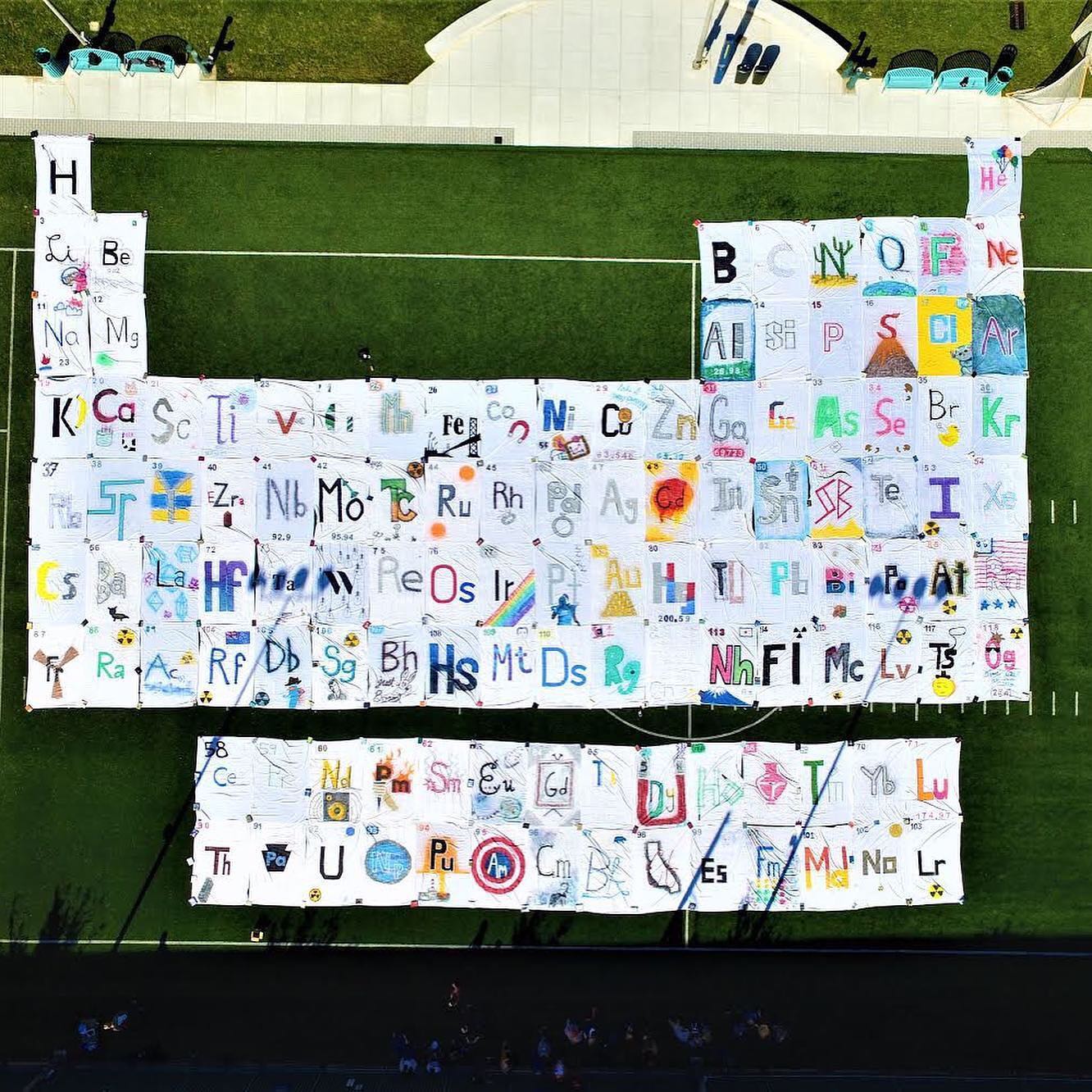
Not only was it National Chemistry Week was last week, but it is also the International Year of the Periodic Table in 2019. While those two facts are unknown to many, Drexel Chemistry Graduate Student Association certainly took note to it. What did they do with they knowledge? They only made the largest periodic table on the east coast, you know.
DJ Hall, president of ChemGSA, emailed The Triangle about this odd, yet interesting, feat. The 135 feet by 100 feet periodic table is worth talking about out of sheer notability, and this achievement opens the door to better understand ChemGSA and the Drexel Undergraduate American Chemical Society.
The two student organizations worked together to honor the 150th anniversary of Dmirti Mendeleev’s creating of the current periodic table. After talking to Hall some more, he was able to give me some insight into why the two organizations decided to take a stab at such an ambitious project.
Upon being asked about why the giant periodic table was created, Hall simply said that the two organizations “wanted to bring awareness to the International Year of the Periodic Table and ACS National Chemistry Week.” The goal of this giant table isn’t designed just to look cool, but rather, it is built to inform others.
What’s even cooler about this larger-than-life installation is that students from both organizations put their own designs for each of the elements. Through this creative process, the designers got to learn more about the history behind each element and how they were named, along with the modern uses for the elements and their importance to the current day. This venture proved to be informational for people both in and out of the organizations, showing the levels that new knowledge can be acquired on.
Diving into how such a large periodic table was created, Hall had a lot of information to give regarding the process. In terms of time, Hall explained that “elements were painted over a period of three weeks. Some people wanted to make something more artistic and took days to finish their element, some people just wanted to paint the element’s symbol, and that took anything from 30 minutes to two hours.” With elements being finished in varying stages of time, the organizations were given plenty of time to prepare for the piecing together of such a large object.
Once all the elements were finished, the periodic table itself took mere hours to be put together. However, since it was pieced together outside, Hall did mention that the wind proved to be an adversary against the project. Thankfully, there were many chemistry books that were used as paperweights.
While it may seem intuitive for the graduate students and the undergraduate students of the Drexel chemistry organizations to work together frequently, this was actually the first collaborative event that ChemGSA and Undergraduate ASC have had together. Thanks to the new editorial board of ChemGSA, new goals for the organization include working with the undergraduate ASC more and have the two groups channel their missions to be one united front for chemistry.
While The Triangle did get a lot of information regarding this project, many other sources are covering this collaboration. The periodic table will also be featured in Drexel Magazine, ACS Chemical and Engineering News — a weekly, nationally published ACS magazine — and Drexel’s College of Arts & Sciences will have the photo of the periodic table featured in many newsletters.

